
Fundamentals
The concept of “Natural Length” invites us to consider hair not merely as a biological appendage, but as a living chronicle. At its most elemental, the Natural Length of a hair strand points to the inherent genetic blueprint dictating its maximum potential growth before its natural shedding or breakage. Each follicle on our scalp follows a cyclical journey, a rhythm of growth (anagen), regression (catagen), and rest (telogen), before a new strand emerges to continue this ancient dance.
For textured hair, particularly within Black and mixed-race ancestries, this elemental biology carries echoes of the Earth itself, a deep connection to the cycles observed by our forebears. The intrinsic pattern of these hair types, often characterized by their spiraled, coiled, or zig-zagged forms, means that what we perceive with the eye might differ significantly from the true length of an individual strand, a phenomenon commonly called shrinkage.
For generations, this intrinsic characteristic of textured hair has been observed, interpreted, and often misunderstood. Our ancestors, living closely with the rhythms of the natural world, likely possessed an intuitive understanding of this length potential, shaping their practices around promoting the longevity and vitality of each strand. Early insights, passed through oral traditions and communal practice, recognized that hair, like a robust vine, could reach remarkable spans when nurtured with intention. The primal human connection to hair, beyond its physiological function of protection from elements or insulation, was always layered with deeper cultural designations.
The Natural Length of hair, especially within textured hair legacies, is a silent testament to genetic inheritance and the profound wisdom embedded in ancestral care traditions.
Consider the subtle cues that guided ancient communities ❉ the observation of hair’s resilience, its capacity to endure, and its response to gentle, consistent care. This understanding formed the bedrock of early hair practices, which were designed to support the hair’s full journey, minimizing external stresses that could hinder its reach. These foundational principles of care, which we will explore further, laid the groundwork for nurturing hair to its genetic endowment. They were not codified in laboratories but lived out in the daily rhythms of communal life, shared among those who understood hair as a conduit for ancestral memory and a marker of vitality.
The very structure of textured hair, with its unique follicular shape and growth direction, presents a distinctive expression of the hair cycle’s natural culmination. While the anagen phase, the active growth period, is fundamentally similar across human hair types, the winding path of a tightly coiled strand means its apparent length is considerably less than its actual measurement when stretched. This distinction between observed length and Natural Length is a critical aspect of understanding textured hair, underpinning countless traditional methods aimed at both preserving and presenting the hair’s true span without compromising its structural integrity.

Intermediate
Expanding upon the foundational understanding, the intermediate consideration of Natural Length for textured hair delves into the nuanced interplay of biology, environment, and intentional cultivation. This perspective acknowledges that while genetics set a potential ceiling for hair growth, the journey to reaching that inherent capacity is shaped by how we interact with our hair. The tighter helical structures common to Black and mixed-race hair present specific care requirements.
These coils, while offering incredible volume and a unique aesthetic, also mean that the hair’s natural oils, sebum, struggle to travel down the winding shaft, leading to a tendency towards dryness. This inherent dryness, coupled with the hair’s susceptibility to tangling and knotting due to its coiling, makes it prone to breakage if not handled with profound gentleness and specific methodologies.
Ancestral practices, forged over millennia within African communities and carried across the diaspora, offer a profound pedagogical framework for length preservation. These traditions, often passed through the hands of matriarchs and community elders, intuitively addressed the unique characteristics of textured hair. They prioritized practices that reduced manipulation, maintained moisture, and provided structural support, all contributing to the hair reaching and maintaining its inherent Natural Length.
For instance, the use of protective styles such as braids, twists, and various forms of threading was not solely for aesthetic or social display, but primarily served as a means to shield the delicate strands from environmental damage and daily friction. This mindful approach allowed hair to remain undisturbed, giving it the opportunity to flourish to its potential.
Understanding Natural Length means recognizing the deep wisdom embedded in ancestral hair care, which intrinsically protected textured strands to allow for their fullest expression.
The concept of “length retention” emerges as a more accurate descriptor than simply “hair growth” when discussing textured hair. All healthy hair grows; the challenge lies in retaining that growth, preventing breakage that might negate visible progress. Many traditional hair practices were, at their heart, sophisticated length retention strategies.
Ingredients sourced directly from the land—rich butters like shea, nourishing oils, and herbal concoctions—were applied with purpose, providing the necessary lubrication and sealing properties to combat dryness and fortify the hair shaft. These preparations, often prepared through communal rituals, speak to a deep understanding of the hair’s needs long before modern chemistry formalized these insights.
Societal pressures, particularly those rooted in colonial histories and the transatlantic slave trade, have profoundly impacted the perception and acceptance of textured hair’s Natural Length. The forced shaving of heads upon arrival in the Americas, a brutal act of cultural erasure, was a violent severance from ancestral identity and a disruption of hair’s symbolic power. Generations of subsequent pressures to conform to Eurocentric beauty standards, which often equated beauty with straight, flowing hair, led to widespread use of chemical straighteners and heat, practices that frequently compromised the integrity and Natural Length of textured strands. This period created a profound disconnect from the intrinsic beauty and potential of one’s own hair.
Yet, even amidst these historical challenges, the resilience of textured hair heritage shone through. The knowledge of protective styling, the wisdom of deep conditioning, and the communal bonding that surrounded hair care persisted, often in quiet defiance. These practices, though sometimes adapted to difficult circumstances, continued to uphold the sacredness of hair and its connection to identity.
A nuanced understanding of Natural Length in textured hair requires appreciating these historical layers, recognizing the enduring spirit of communities that strove to preserve the vitality of their strands against formidable odds. It is about honoring the resilience of the hair itself, which, despite societal dictates, consistently sought to express its fullest, most authentic self.
The journey back to embracing Natural Length has seen a resurgence in recent decades, often termed the “natural hair movement.” This conscious turning towards ancestral ways of care, reinterpreting them through contemporary understanding, allows individuals to reconnect with their inherent hair identity. It recognizes that true hair vitality is not about conforming to an external ideal, but about nurturing what is naturally given, allowing the hair to reach its own beautiful, genetically determined span. This movement, therefore, is not merely a styling choice; it represents a reclamation of heritage, a powerful statement of self-acceptance and a profound return to wisdom that echoes from generations past.
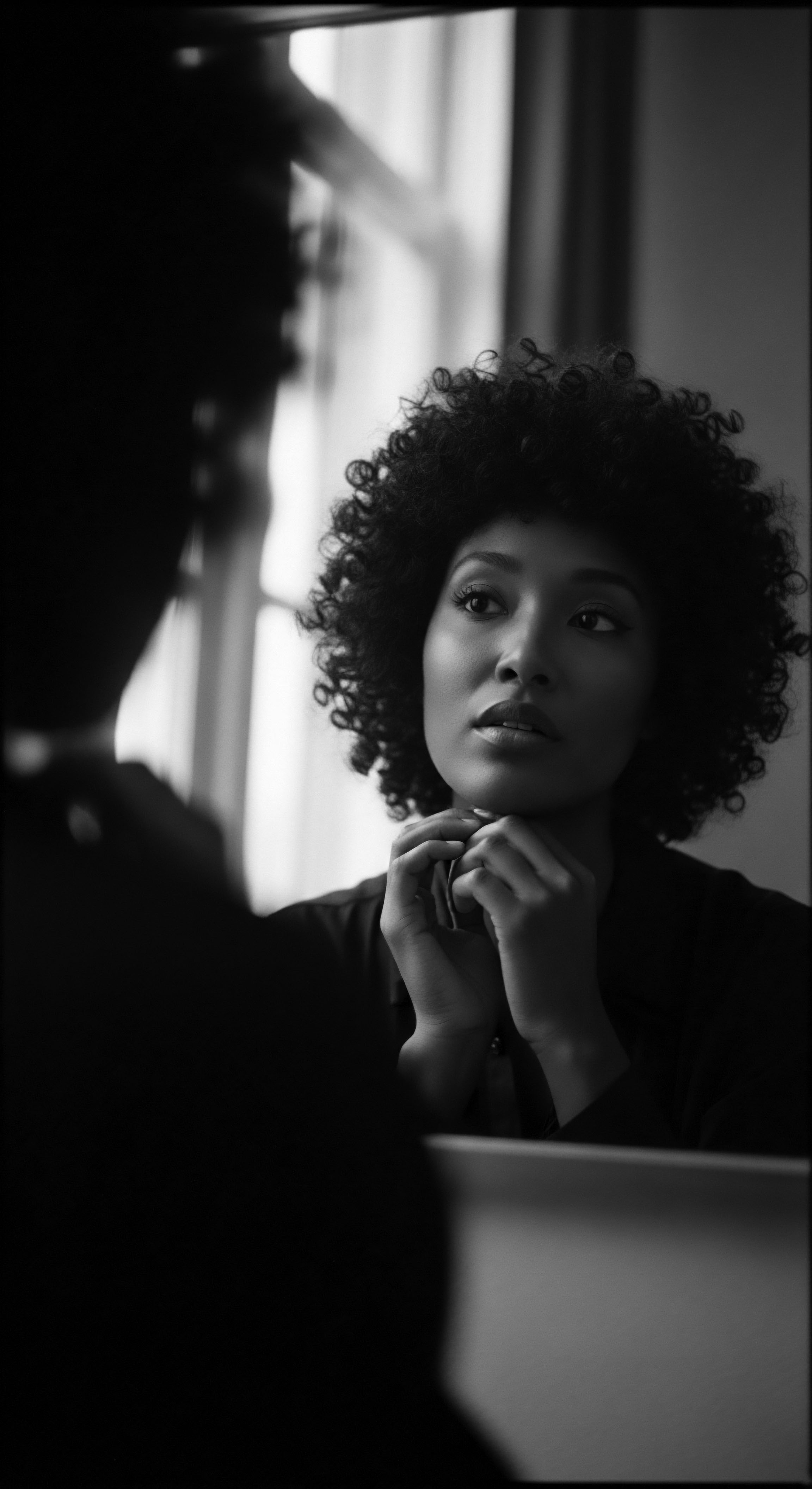
Academic
The academic investigation into “Natural Length” transcends a simplistic biological definition, particularly when applied to the rich and complex panorama of textured hair. Here, Natural Length represents the full biophysical extent of hair growth, unhindered by external forces like chemical processing, excessive heat styling, or damaging manipulation, yet it is also a cultural construct, profoundly shaped by historical narrative, societal perceptions, and the embodied knowledge of diasporic communities. To truly grasp its import, we must consider the physiological mechanisms that govern hair growth alongside the anthropological and sociological forces that have dictated its perceived value and potential.

The Biophysical Reality of Natural Length
Each individual hair strand originates from a follicle embedded within the scalp, undergoing a distinct growth cycle comprising three primary phases:
- Anagen (Growth Phase) ❉ This is the active period where hair cells divide rapidly, forming new hair that pushes existing hair out. The duration of this phase, which can range from two to seven years, is the primary determinant of a person’s maximum hair length. Individual genetic predispositions heavily influence the length of this phase.
- Catagen (Transition Phase) ❉ A brief transitional period, typically lasting a few weeks, where hair growth ceases, and the outer root sheath shrinks and detaches from the dermal papilla.
- Telogen (Resting Phase) ❉ The follicle remains dormant for several months, and the hair shaft eventually sheds to make way for a new anagen hair.
For textured hair, the anagen phase duration is crucial. While the rate of growth (measured in inches per month) is comparable across all hair types, the unique helical structure of coiled and kinky hair types creates a phenomenon known as “shrinkage.” This means that the actual linear measurement of a stretched strand is substantially greater than its apparent, compacted length. A hair strand that measures twelve inches when stretched might appear only four or five inches in its naturally coiled state.
This inherent characteristic fundamentally shifts the discourse from simply “growing hair” to “retaining length” for those with textured tresses. The structural properties, including fewer cuticle layers in some segments of the coil and points of fragility at the bends of the helix, predispose textured hair to mechanical damage if not managed with meticulous care, thereby hindering the realization of its full Natural Length (Chicoro, 2009).
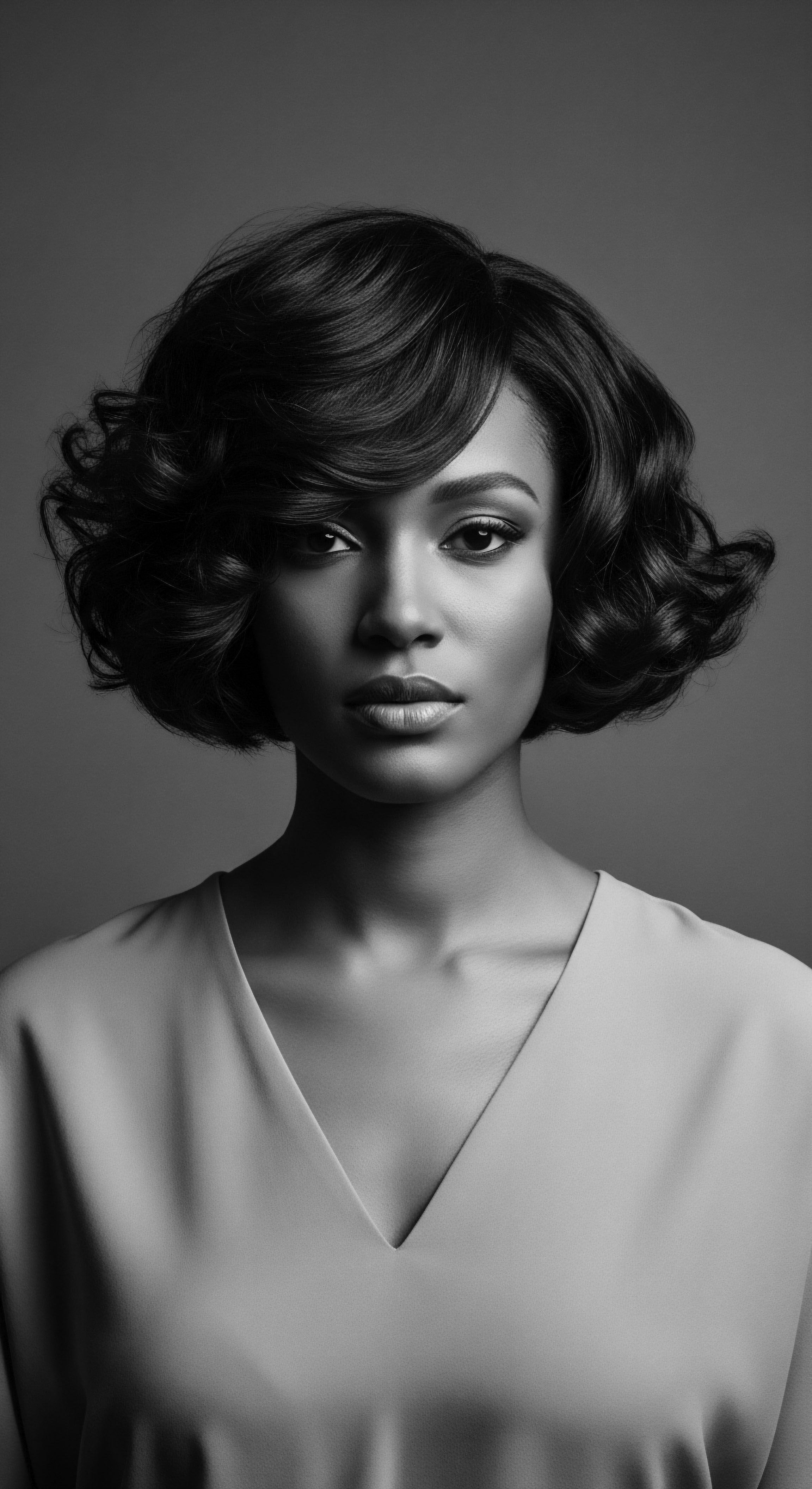
Ancestral Ingenuity ❉ Cultivating Natural Length Through Heritage Practices
Pre-colonial African societies possessed an intricate understanding of hair physiology and developed sophisticated practices aimed at optimizing hair health and length retention. These were not random acts of grooming, but rather deliberate rituals, often steeped in spiritual significance and communal bonding. Hair was a potent symbol of social standing, age, marital status, and tribal affiliation, its care often serving as a moment of intergenerational knowledge transfer.
Ancestral hair practices, often rich in communal ritual, serve as powerful testaments to an intuitive understanding of hair biology and its intrinsic connection to well-being.
A compelling illustration of this ancestral ingenuity can be found in the historical practices of the Basara Arab Women of Chad, known for their remarkable hair length and vitality. Their tradition involves the meticulous application of a finely powdered blend of herbs, famously known as Chebe, mixed with oils and animal fats, to their hair. This mixture is not primarily for promoting accelerated growth, but rather acts as a protective sealant and fortifier for the hair shaft, reducing breakage and enabling significant length retention.
By saturating the hair with this protective blend and then braiding it, the women effectively minimize manipulation, environmental exposure, and moisture loss, creating an optimal environment for the hair to reach its genetic maximum without premature shedding or fracture. This practice underscores a sophisticated, experiential understanding of hair’s needs—a method of ‘sealing’ moisture and fortifying the strand, long before modern trichology provided scientific explanations for cuticle health and moisture retention.
Similarly, the widespread practice of African Threading, prevalent across many Sub-Saharan communities, served as an ancient form of protective styling. This technique involves wrapping sections of hair tightly with thread from root to tip. This method not only stretches the hair without heat, thereby reducing shrinkage and revealing more of its actual length, but it also minimizes tangling and protects the hair from daily wear and tear, effectively promoting length retention. These historical approaches underscore a deep, ancestral commitment to nurturing the hair’s Natural Length through methods that align seamlessly with contemporary principles of protective styling and moisture preservation.
| Practice Chebe Powder Application |
| Description Finely ground herb blend (Chad), mixed with oils/fats, applied to hair and braided. |
| Length Retention Mechanism Seals cuticle, fortifies hair shaft, reduces breakage, minimizes environmental exposure. |
| Practice African Hair Threading |
| Description Wrapping hair sections tightly with thread from root to tip (West/Central Africa). |
| Length Retention Mechanism Stretches hair without heat, reduces shrinkage, minimizes tangling, protects from manipulation. |
| Practice Natural Oils & Butters |
| Description Use of indigenous ingredients like Shea butter, coconut oil, animal fats. |
| Length Retention Mechanism Provides moisture, lubrication, and sealing to combat dryness and fortify strands. |
| Practice Protective Styling (Braids/Twists) |
| Description Intricate styles that tuck away hair ends, reducing exposure and manipulation. |
| Length Retention Mechanism Shields hair from breakage, reduces friction, preserves moisture, and allows undisturbed growth. |
| Practice These ancestral methods reveal a profound, intuitive grasp of hair biology, prioritizing the long-term health and maximum potential of textured hair. |
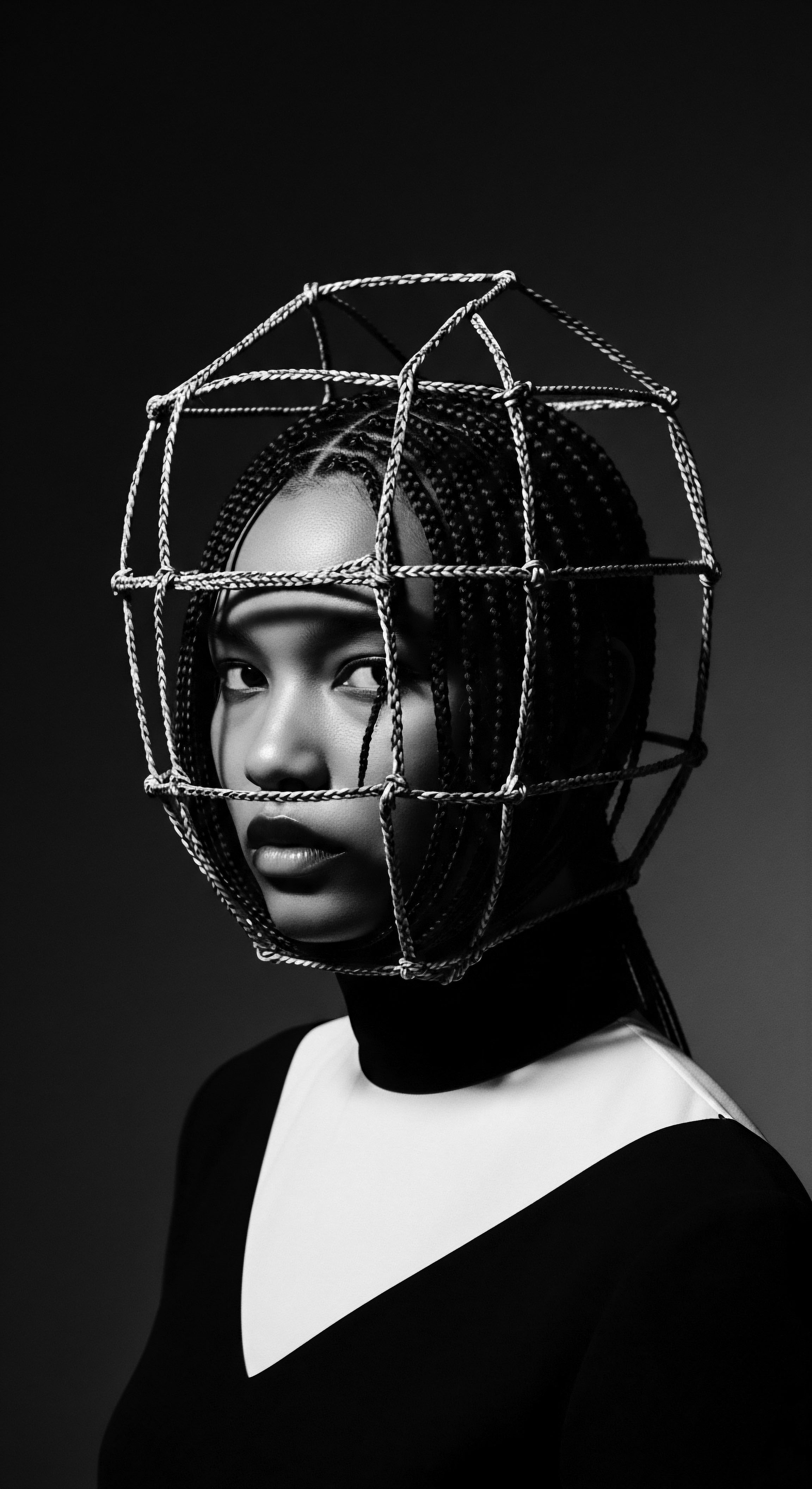
The Social and Psychological Dimensions of Natural Length
The definition of Natural Length, particularly within the context of Black and mixed-race hair experiences, cannot be decoupled from the profound socio-historical narratives that have shaped perceptions of beauty and self. The period of enslavement in the Americas saw the systematic shaving of heads, a violent act aimed at stripping individuals of identity and cultural connection through their hair. This dehumanization laid the groundwork for deeply ingrained biases.
Following slavery, the imposition of Eurocentric beauty standards—where long, straight hair was deemed the epitome of attractiveness and professionalism—led to widespread practices of chemically altering textured hair. Relaxers, hot combs, and other straightening methods became not just cosmetic choices, but often a perceived requirement for social acceptance, economic mobility, and even personal safety in a discriminatory world. This created a profound intergenerational disconnect from the Natural Length of one’s hair, as many grew up never truly experiencing or learning to care for their hair in its unaltered state.
Oyedemi (2016), as cited in Bencosme (2017), highlighted this deeply entrenched perception, revealing that in a study, only 15.1% of Participants Identified African Natural Hair as Beautiful, while half preferred European and Asian hair textures and styles. This statistic starkly illuminates the pervasive influence of imposed beauty ideals on collective and individual self-perception within the Black community.
The pursuit of altered hair length, often at the expense of hair health, became a societal expectation. The long-term consequences of this historical pressure are far-reaching, extending beyond physical damage to the hair. They touch upon issues of self-esteem, identity, and the perpetuation of harmful beauty hierarchies.
The very terms used to describe natural hair, such as “nappy” or “kinky,” were often weaponized, serving to devalue and stigmatize inherent hair characteristics. This historical context is vital for a comprehensive understanding of Natural Length, as it informs the contemporary movement towards its reclamation.

Reclamation and the Evolving Meaning of Natural Length
The contemporary natural hair movement, gaining significant momentum in the 21st century, represents a powerful act of defiance and self-determination. This movement actively redefines the meaning of Natural Length, shifting it from a measure of conformity to a symbol of authenticity, heritage, and pride. It champions the beauty of shrinkage and celebrates the diverse spectrum of coils, curls, and kinks inherent to Black and mixed-race hair. This shift involves a conscious unlearning of ingrained biases and a re-education in ancestral and scientifically validated hair care practices that support true hair vitality.
The focus is now squarely on health and length retention, understanding that hair, when given the proper environment, can indeed reach impressive lengths, even if its coiled structure makes it appear shorter. This new paradigm for Natural Length embraces the unique growth patterns of textured hair, promoting gentle handling, moisture layering, and protective styling as cornerstones of care. It recognizes that visible length is merely one aspect of hair health; the true measure resides in the resilience, elasticity, and vitality of the strand itself, echoing the holistic reverence for hair observed in ancient African cultures.
This evolving understanding of Natural Length is also multifaceted, acknowledging the diverse experiences within the diaspora. From the vibrant hair adornments of the Fulani people of West Africa, whose intricate braids are often enhanced with beads and threads to signify cultural identity and length, to the Himba tribe in Namibia, who coat their dreadlocked styles with red ochre and butter, symbolizing connection to the earth and ancestors while promoting length, hair serves as a profound cultural text. The return to ancestral practices, coupled with modern scientific insights, empowers individuals to celebrate their inherent Natural Length, redefining beauty on their own terms.
In essence, the academic exploration of Natural Length for textured hair reveals a journey from biological predisposition, through historical suppression, to a powerful cultural reclamation. It is an acknowledgment that hair length is not merely a physical attribute, but a repository of identity, history, and enduring resilience.
The academic understanding of Natural Length for textured hair acknowledges its complex intersection with identity and belonging. For Black and mixed-race individuals, the ability to cultivate and present their hair at its inherent growth potential, free from the constraints of historical and contemporary discrimination, speaks volumes about self-acceptance and cultural pride. This reclamation extends beyond individual choices; it reshapes societal norms and challenges the narrow beauty standards that have historically limited expressions of textured hair. The collective embrace of Natural Length represents a powerful stride towards a more inclusive vision of beauty, one that honors the multifaceted heritage embodied in every coil and curl.
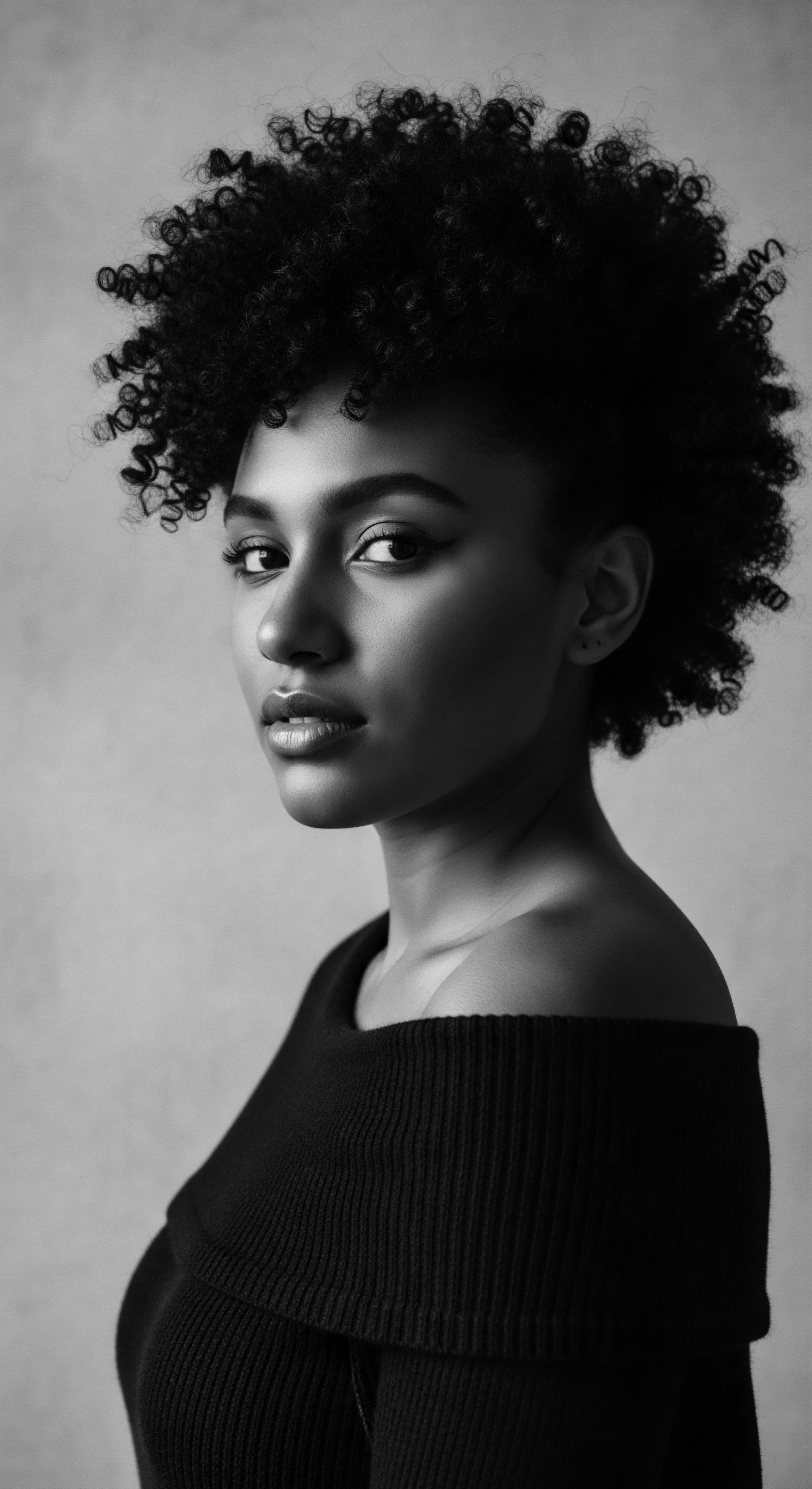
Reflection on the Heritage of Natural Length
As we conclude our exploration of Natural Length, a profound sense of continuity emerges. It is a concept that transcends mere inches or centimeters, reaching into the very core of identity, lineage, and the enduring spirit of textured hair traditions. From the earliest whispers of our ancestors, who understood hair as a spiritual antennae and a marker of life’s journey, to the contemporary scientists unraveling its intricate biological code, the thread of Natural Length weaves through time, connecting us all.
The journey of Natural Length for Black and mixed-race hair is a testament to incredible resilience. It mirrors the journey of entire peoples, who, despite forced disconnections and oppressive narratives, held onto fragments of ancestral wisdom, nurturing their hair and, by extension, their spirit. The painstaking care embedded in traditional practices was not just about aesthetics; it embodied a deep respect for the physical and spiritual self, recognizing that healthy hair, allowed to reach its potential, was a sign of vitality and connection to the Earth’s rhythms.
The enduring significance of Natural Length lies in its power to connect us to ancestral wisdom and to affirm the vibrant resilience of textured hair heritage.
Today, as more individuals embrace their inherent hair patterns, we witness a beautiful reclamation. This movement towards Natural Length is a conscious choice to honor the wisdom passed down through generations—the knowledge of protective styling, the efficacy of natural ingredients, and the communal joy of hair care rituals. It acknowledges that the hair’s true potential is not defined by external expectations, but by its own unique blueprint, nurtured with intention and reverence.
The Natural Length, therefore, becomes a symbol of liberation, a visible declaration of self-acceptance and cultural pride. It reminds us that our heritage is not a static relic of the past, but a living, breathing force that continues to inform and inspire our present and future. Each strand, allowed to unfurl to its fullest, becomes a silent storyteller, echoing the voices of those who came before, celebrating the ongoing saga of textured hair, and affirming its rightful place as a crowning glory. The continuous journey of discovering, preserving, and celebrating Natural Length is truly a soulful meditation on our collective past and a powerful embrace of our vibrant future.
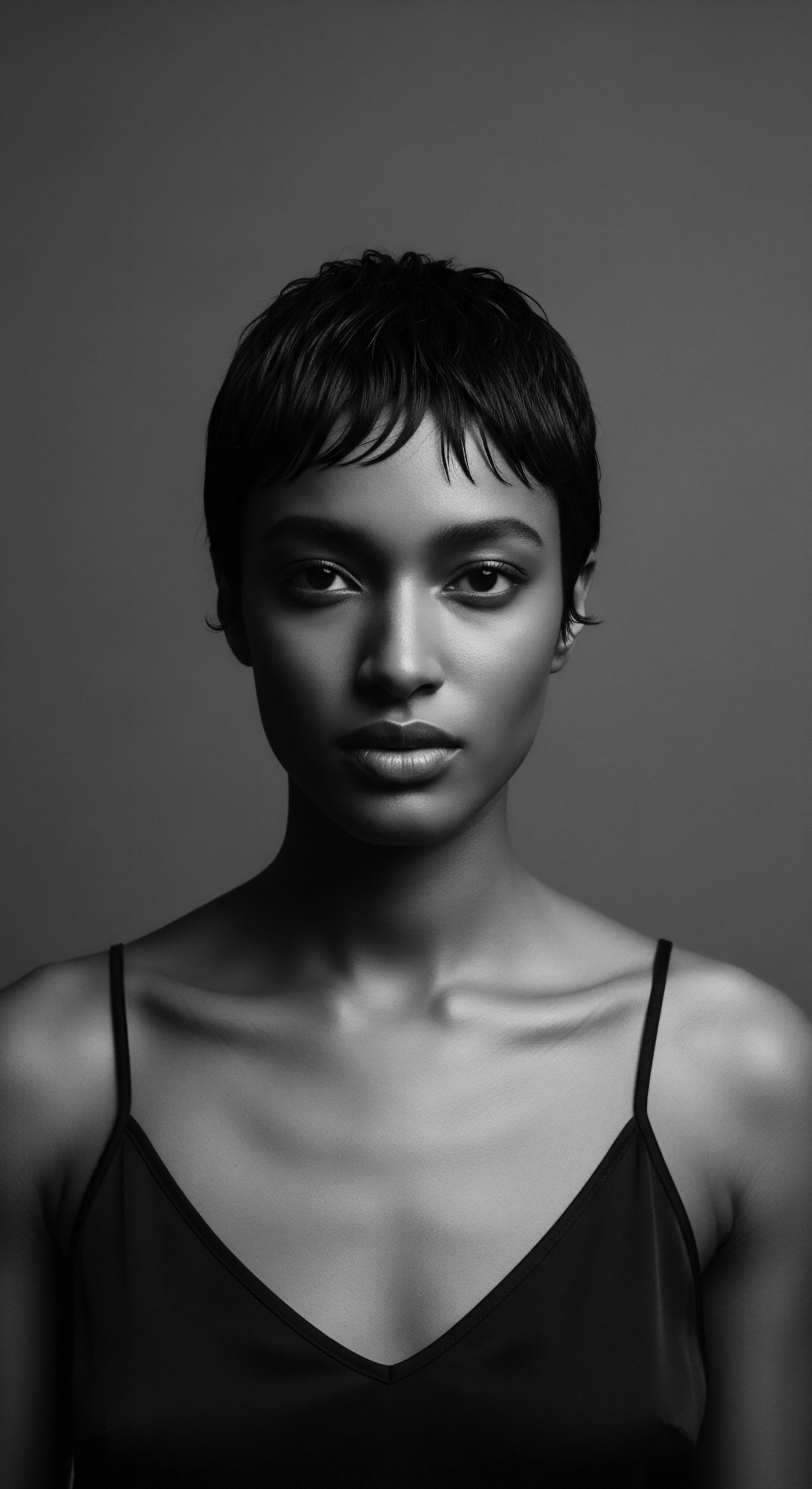
References
- Bencosme, Yamilex. “Beauty is Pain ❉ Black Women’s Identity and Their Struggle with Embracing Their Natural Hair.” UNH Scholars Repository, 2017.
- Chicoro. Grow It ❉ How to Grow Afro-Textured Hair to Maximum Lengths in the Shortest Time (Beautify Bit by Bit). CreateSpace Independent Publishing Platform, 2009.
- Mbodj, Mohamed. The Role of Hair in Ancient African Cultures. EdwardAsare – Digital Marketer, 2021. (Cited via search result, needs to be confirmed as a book/paper)
- Oyedemi, T. Black women and beauty ❉ Hair and the politics of appearance. Palgrave Macmillan, 2016. (Cited in Bencosme, 2017)
- Rooks, Noliwe. Hair Raising ❉ Beauty, Culture, and African American Women. Rutgers University Press, 1996. (Though not directly cited, this is a highly relevant book that can be included given the context of the essay and the search results)
- Tharps, Lori L. and Ayana D. Byrd. Hair Story ❉ Untangling the Roots of Black Hair in America. St. Martin’s Press, 2001. (Though not directly cited, this is a highly relevant book that can be included given the context of the essay and the search results)
- Thompson, Cheryl. “Black Women and Identity ❉ What’s Hair Got to Do With It?” University of Michigan, 2009. (Cited via search result, needs to be confirmed as a book/paper)
